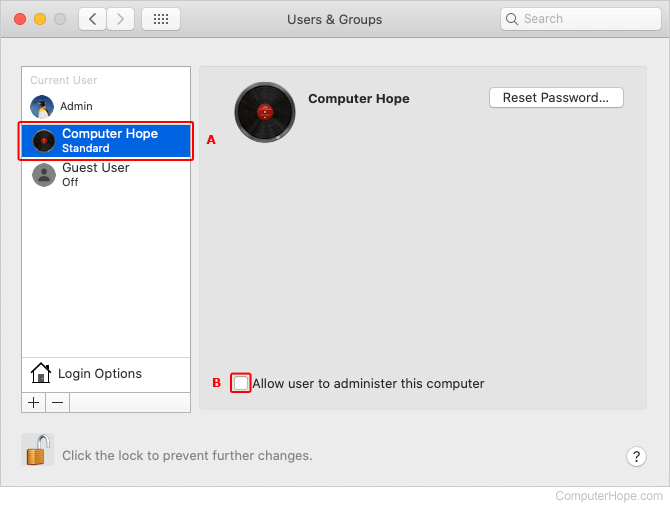How to change a user account to an administrator account
Updated: 12/29/2023 by Computer Hope
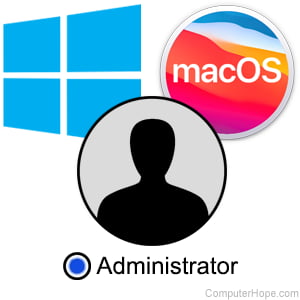
An administrator account can create additional user accounts, install software, and complete other tasks on a computer. If a standard user account needs to be changed to an administrator account, choose the appropriate operating system below and follow the steps provided.
Note
The following steps require an administrator account.
Windows 8, 10, and 11

- Press the Windows key, type Control Panel, and press Enter.
- Under the User Accounts section, click Change account type.
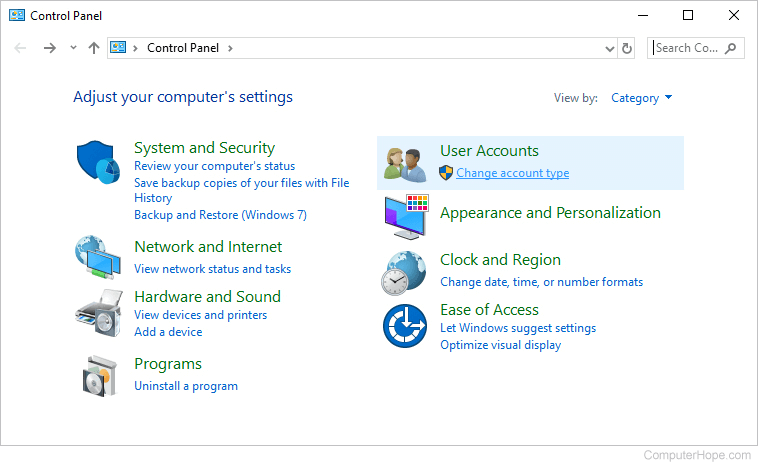
- Select the account you want to grant administrative rights.
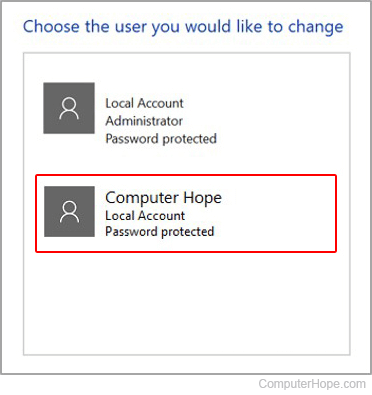
- With an account selected, click the Change the account type link.
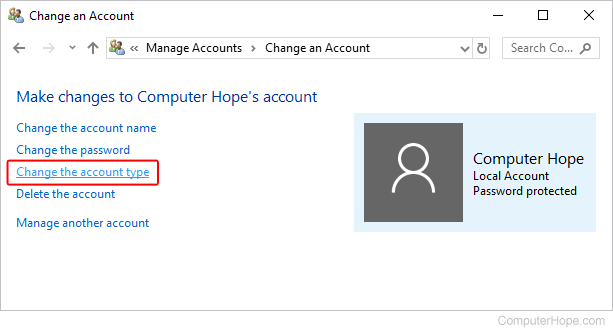
- Click the circle next to Administrator (A) and click the Change Account Type button (B).
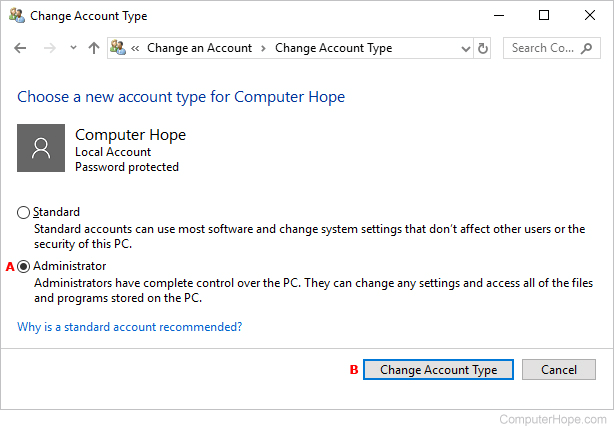
Windows Vista and 7

- Open the Control Panel.
- Click the User Accounts option.
- Click User Accounts again, then click the Manage User Accounts option.
- Find the user account you want to change under the Users for this computer section on the Users tab. Click that user account name.
- Click the Properties option in the user account window.
- Select the Administrator group to set the user account to an administrator account on the Group Membership tab.
- Click the OK button to save the changes. Click OK on any additional windows to close out the user account settings.
Windows XP

- Open the Control Panel.
- Double-click the User Accounts option.
- Click the user account name you want to change to an administrator.
- Click the Change the account type option.
- Select the Computer administrator option, then click the Change Account Type button.
Alternative method
- From the Windows desktop, right-click My Computer.
- Click Manage, which should open the Computer Management window, as shown below.
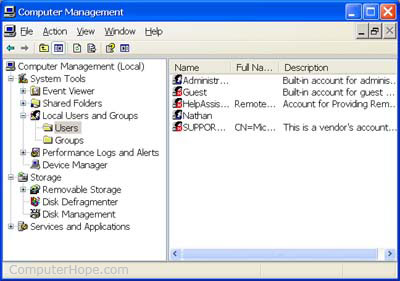
- Click the + next to Local Users and Groups or double-click it.
Note
If you cannot access this section, you likely do not have administrator rights to the computer.
- Click Users, and in the right pane, all user accounts set up on your computer are shown.
- Double-click the account you want to view.
- Click Member of.
- If the user is a member of "Administrators," that account already has administrative rights. If this group is not listed, click the Add button.
- Type administrators and click the Check Names button. If successfully found, your computer name followed by "\Administrators" should appear. For example, HOPE\Administrators.
- Click OK.
After following the steps above, the account is part of the administrator's group and has administrative rights on that computer.
Windows Command Prompt
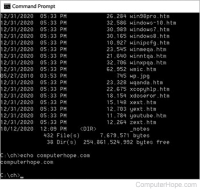
- Open Windows Command Prompt with elevated permissions.
- At the command line, type net localgroup administrators <username> /add, where <username> is the name of the user account you are changing.
For example, to change a user account named myaccount to an administrator account, type the following command.
net localgroup administrators myaccount /add
macOS Ventura and Sonoma
Here is how to make an administrator account in macOS versions 13 and 14.

- At the top-left corner of the desktop screen, click the Apple icon.
- Select System Settings from the Apple menu.
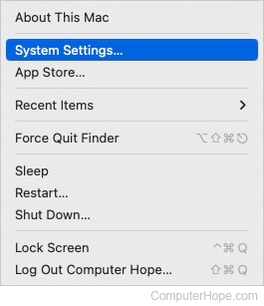
- In the left section, scroll down and click the Users & Groups selector.
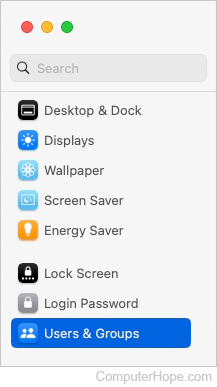
- In the right section, click the information icon next to the account you want to grant administrative privileges.
![]()
- In the account's window, click the toggle switch next to Allow this user to administer this computer so that it's in the On position.
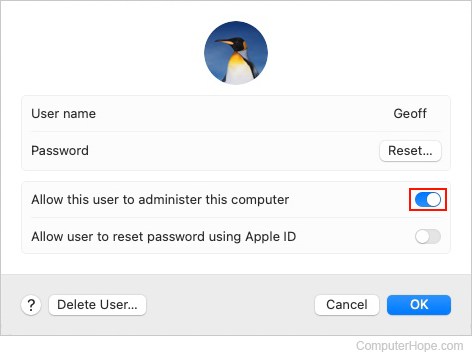
macOS High Sierra, Mojave, Catalina, Big Sur, and Monterey
Here is how to make an administrator account in macOS versions 10 through 12.

- At the top-left corner of the desktop screen, click the Apple icon.
- Select System Preferences from the Apple menu.
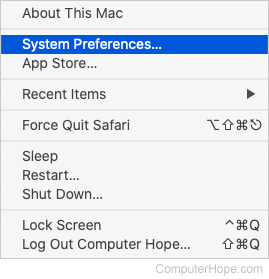
- In the new window, click the Users & Groups icon.
![]()
- Click the lock symbol in the lower-left corner of the Users & Groups window.
![]()
- When prompted, enter your password and click the Unlock button.
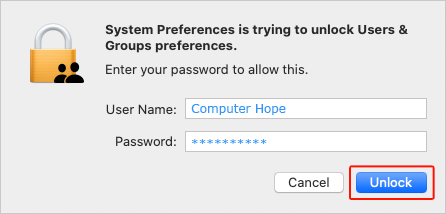
- On the left side of the window, select the account you want to add administrative privileges (A), and then check the box next to Allow user to administer this account (B).
